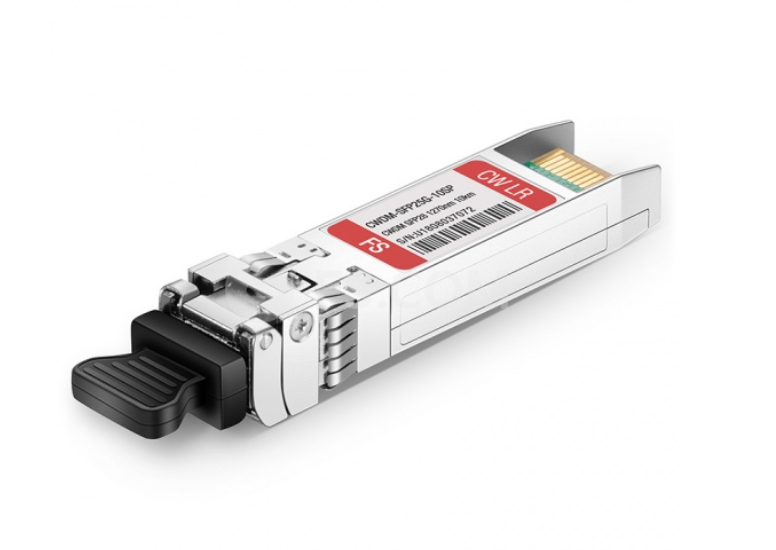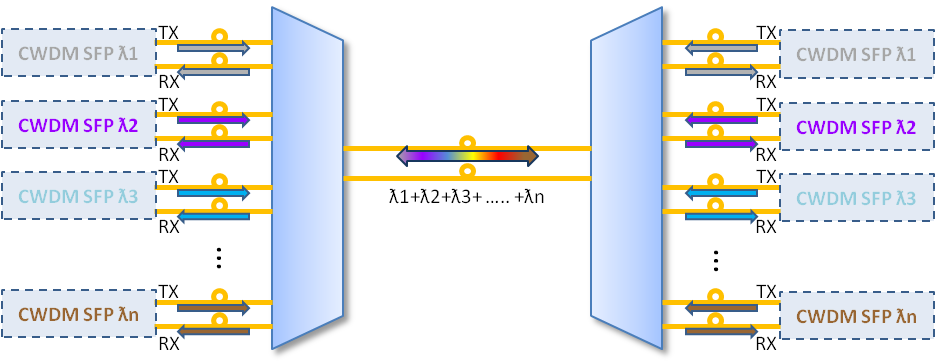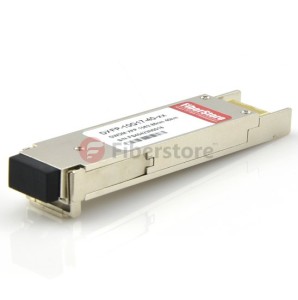Hyper-scale data centers have been seeking for transceiver solutions with higher port densities and lower cost per bit, which has driven the development of PAM4 (Four-Level Pulse Amplitude Modulation) technology. Compared to the expensive multi-state coherent modulation scheme, simple PAM4 can deliver the right combination of speed, low cost, and low power consumption in data centers. This article is intended to introduce PAM4 for 100G and 400G applications.
What Is PAM4?
PAM4 is a technology that uses four different signal levels for signal transmission and each symbol period represents 2 bits of logic information (0, 1, 2, 3). By transmitting two bits in one symbol slot, PAM4 halves the signal bandwidth. With half of the bandwidth, PAM4 can achieve 50Gb/s data rate transmission in the 25Gb/s electrical tolerance environment. Also, PAM4 can minimize signal degradation and double the data rate. PAM4 allows us to put more data onto the existing fiber. In other words, if you want to increase bandwidth, you don’t have to reconfigure the data center with more fibers, just using advanced modulation PAM4 technology to increase the data rate. These components for single-lambda 100G can be extended to 400Gbps transceivers with four-channel drivers and CWDM4 wavelengths. However, these advanced modulation techniques impose additional requirements on the optical components used, especially consume higher amounts of electrical power.

PAM4 or CWDM4 for 100G and 400G Applications
Although speed is important in the data center, economics and special constraints make cost and complexity more important than speed. Most of the data centers have already worked toward 100G, 200G, and even 400G with the technology of PAM4 and CWDM4, so which is the best for 100G and 400G application?
PAM4 for 100G and 400G Applications
PAM4 is considered to be a cost-effective and efficient alternative solution for 100G and 400G construction. For 100G transceiver modules, single-wavelength PAM4 technology reduces the number of lasers to one and eliminates the need for optical multiplexing. For 400G, the largest cost is expected to be optical components and related RF packages. PAM4 technology uses four different signal levels for signal transmission. It can transmit two bits of logic information per clock cycle and double the transmission bandwidth, thus effectively reducing transmission costs. This effectively solves the problem of high cost while meeting bandwidth improvements.
CWDM4 for 100G and 400G Applications
CWDM4 (Coarse Wavelength Division Multiplexing) technology is another cost-effective solution for large-scale deployment and migration in data centers. For 100G and 400G networks, the network architecture uses four lanes of 25 Gb/s, using CWDM technology to transport 100G and 400G optical traffic on duplex single mode fiber (SMF). WDM reduces the number of fibers required to achieve this type of transmission, ultimately reducing the cost of the entire board.
Conclusion
As a popular signal transmission technology for high-speed signal interconnection in next-generation data centers, PAM4 signals are widely used for electrical and optical signal transmission on 100G, 200G, and 400G interfaces. There are also a large number of PAM4 QSFP28 and PAM4 SFP28 modules available on the market to help you build your network.
Related Articles:
Global Optical Transceiver Market: Striding to 200G and 400G
Decoding 100G QSFP28 Transceiver








